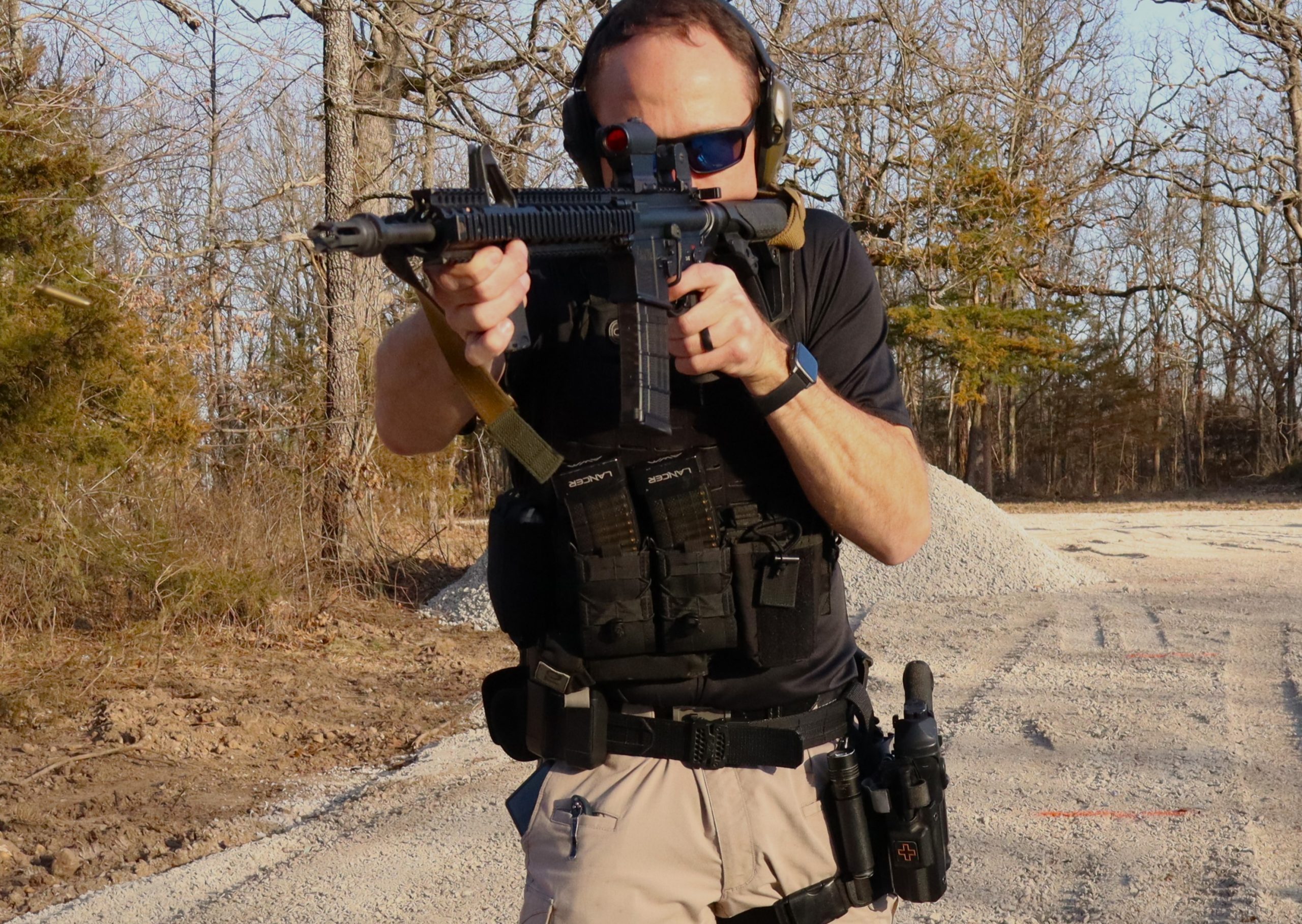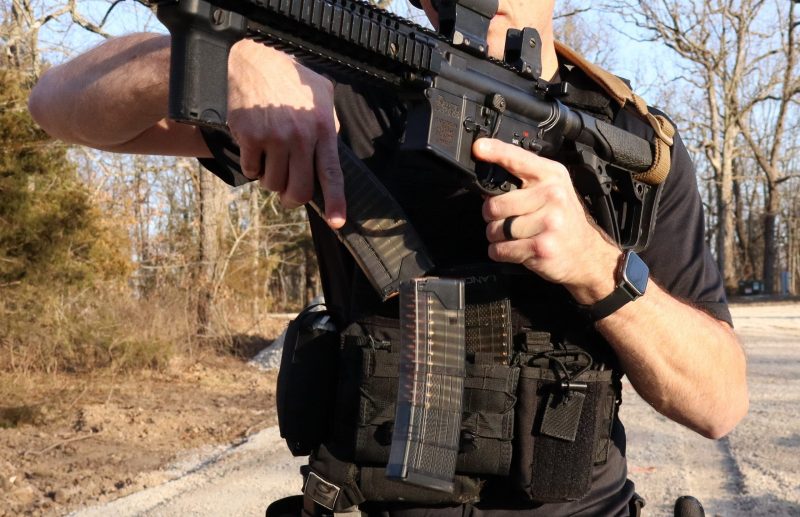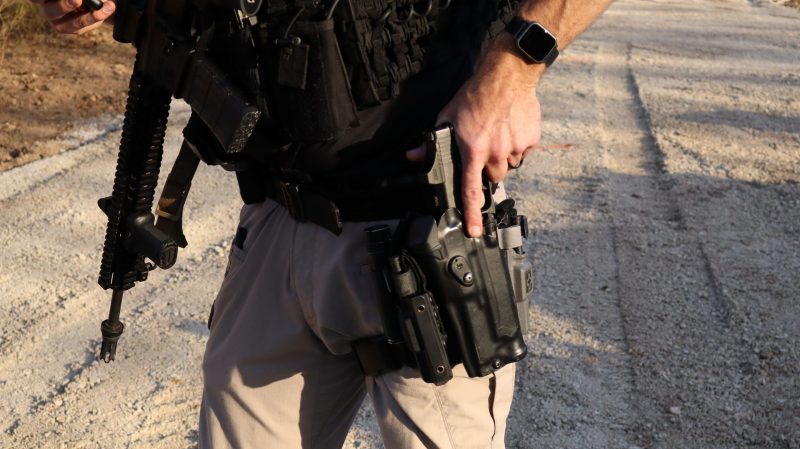So you’ve bought a plate carrier. You’re all good to go and start filming reels on Instagram, right? Well, not so much. The funny thing about equipment is it doesn’t matter if you’re running the latest and greatest. Untested gear on an inexperienced and untrained individual inevitably finds a failure point at the most inopportune moment. As they say, Murphy’s Law is in full effect. So, if you’ve set yourself up with a plate carrier, how do you go about familiarizing yourself with it?
The goal today is to answer this question. I’ve made plenty of mistakes and learned my fair share of lessons on my own and from others. Equipment familiarity is a very important part of becoming a proficient shooter. Shooters unfamiliar with their gear often fumble, stagger, and strain their way through training sessions. As such, here are some recommendations on how to go about testing your new plate carrier setup to familiarize yourself and address equipment or training shortcomings.
Train with a Plate Carrier
As if I don’t repeat myself often enough, training is crucial. The first time to be running a piece of kit — whether a plate carrier, pistol, or otherwise — shouldn’t be in a stressful situation. While organized training isn’t cheap, range days are more accessible to testing your gear. If allowed, wear a plate carrier on the range and familiarize yourself with how it wears when transitioning between firearms, picking up magazines, or shooting.

If you’ve never shot with hard or soft armor on, the change is noticeable. Body armor, especially plate carriers, shifts, pinches, or restricts your upper body’s movement. Get comfortable with wearing one, and it won’t be an issue in the event you’ve donned it when it counts. If you’re on an even more restrictive budget, dry fire practice and conducting chores around your house while wearing the plate carrier are other options.
By no means do I recommend eliciting odd glances from your neighbors while mowing the lawn. However, if you’re cleaning the house, folding clothes, and picking up toys, you may find a magazine or piece of gear that works loose while bent over. If anything, you’re breaking yourself and the plate carrier into an environment where you may have to perform similar actions. It’s better to drop the mag while picking up dirty clothes than to do so while in a gunfight.
Find Failure Points and Remain Open to Change
Training and practice are designed to find your failure points. Accordingly, you can tailor training to address these shortcomings and work on deficient areas of performance. However, training also identifies failure points in your equipment. As noted previously, it’s better for equipment to fail at home or on the range during practice than occur in a gunfight. Magazine pouches often require adjustment for proper retention. A plate carrier may inadvertently trigger your rifle’s magazine release if slung in a certain position. These are all critical points to identify early on and address through proper training.

While failure points are important to identify, the placement of your equipment is just as crucial. Is your tourniquet accessible with both hands? Flashlight? Magazines? Does their placement restrict your movements? Can you shoot a rifle from both sides of the carrier? From personal experience, I’ve learned to limit what I put on the back of my carrier for a few reasons. For one, it’s not easily accessible. While a dump pouch may be suitable on the back, a medical kit isn’t great there. Furthermore, sitting in a vehicle for extended periods becomes miserable if bulky items push your back off the seatback. These nuanced adjustments are easily identified if the carrier is tested in environments consistent with how it will be used.
A Comfortable Plate Carrier Fit in Uncomfortable Positions
Shooting from prone is a relatively comfortable position. However, the addition of a plate carrier changes that dynamic. At one time, I ran tandem AR magazine carriers. Over time, I learned that magazine carrier thickness and ceramic or synthetic plate thickness add a lot of bulk. When doing “man down” drills, I found it was exceptionally difficult to lift and drag someone when your vest sticks out like a tumor.
Conversely, prone shooting was just as bad. My upper body was elevated so high off the ground that obtaining a stable shooting position was more trouble than it was worth. Accordingly, the tandem magazine carriers were quickly replaced with single mag carriers.

While shooting prone is one anecdotal example, there are plenty of other positions or circumstances where you may be in an uncomfortable shooting position. Unfortunately, it’s unavoidable at times. Accordingly, I embrace the principle of becoming comfortable with being uncomfortable. Despite advancements in design and technology, body armor isn’t built for comfort; it’s built to save your life. While lighter and thinner, plate carriers still affect your posture, put imbalanced weight on the front of your upper body, and restrict movement. It’s important to practice and train in a variety of shooting positions to familiarize yourself with the body armor’s inherent quirks.
Run all Your Gear
While my attention has focused on plate carriers, those are one piece of the greater defensive package. If ran with any kind of tactical/duty belt or handgun on the waistband, it’s important to practice and train with these items in conjunction with each other. A large plate carrier adds bulk to the upper body. Accordingly, the carrier’s bulk tends to affect accessibility and comfort when combined with a duty belt or any kind of belt-mounted equipment.

While a mid-to-high ride outside-the-waistband (OWB) or an inside-the-waistband (IWB) holster are comfortable for daily carry, they’re not exactly the greatest for work with a plate carrier. As pointed out earlier, the thickness of plates, padding, and gear on a plate carrier extends over your beltline. When running a firearm IWB with a plate carrier, accessing the firearm quickly is like the Michelin Man trying to do his best Jerry Miculek impression. It’s awkward and tedious. Training both pistol and rifle with a plate carrier will either expose these problems or help you become proficient with drawing a handgun and other gear while wearing a plate carrier.
The most common solution for handgun access with a plate carrier is to utilize a drop-leg holster. While many “tacticool” folks run drop legs, they serve a greater purpose than just appearances. A drop leg holster adjusts the firearm lower relative to the duty belt, which allows it to clear below the plate carrier without catching during the draw. However, drop leg holsters are awkward while running if worn too low.
I recall an incident when a fellow law enforcement officer lost his firearm due to an improperly adjusted drop leg holster during a foot pursuit with a shooting suspect. This is not ideal. Drop legs shouldn’t ride near your knee. Rather, they should be as close to the belt line as possible without the plate carrier affecting the draw. This balance is only obtained through practice and training. Furthermore, keep in mind that a drop leg holster alters the firearm’s position when seated. The draw mechanics are not the same and need practice.
Final Thoughts
Plate carriers are a great tool that could potentially save your life in an active shooter, home invasion, or similar self-defense scenario. However, the tool is only as competent and practical as the user. Practice with your vest carrier; test its limits — and yours. You may need to shed, add, or adjust gear. That’s ok and part of the process. The most important part is to remember this is done in training and not during a violent encounter where the consequences are permanent and potentially life-altering.


